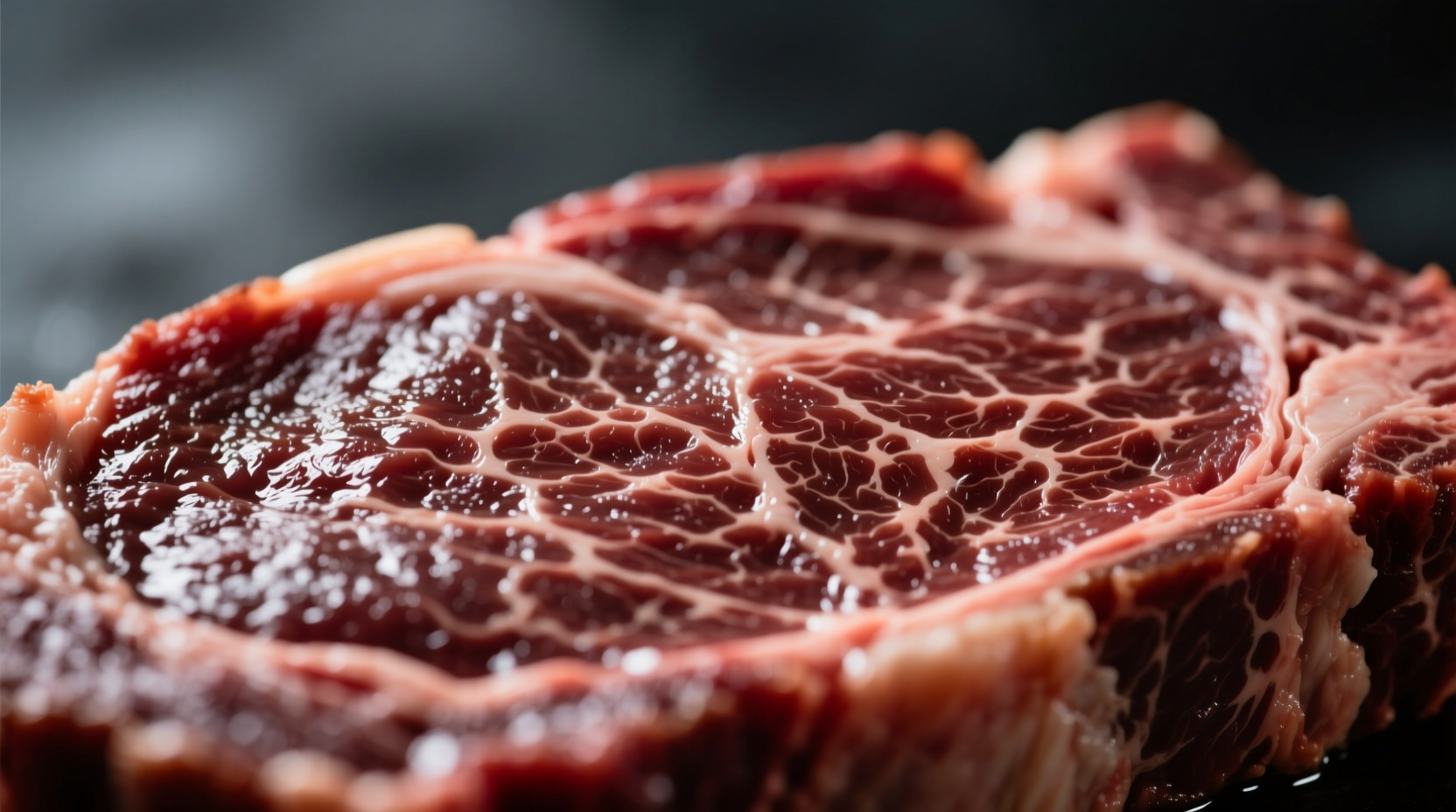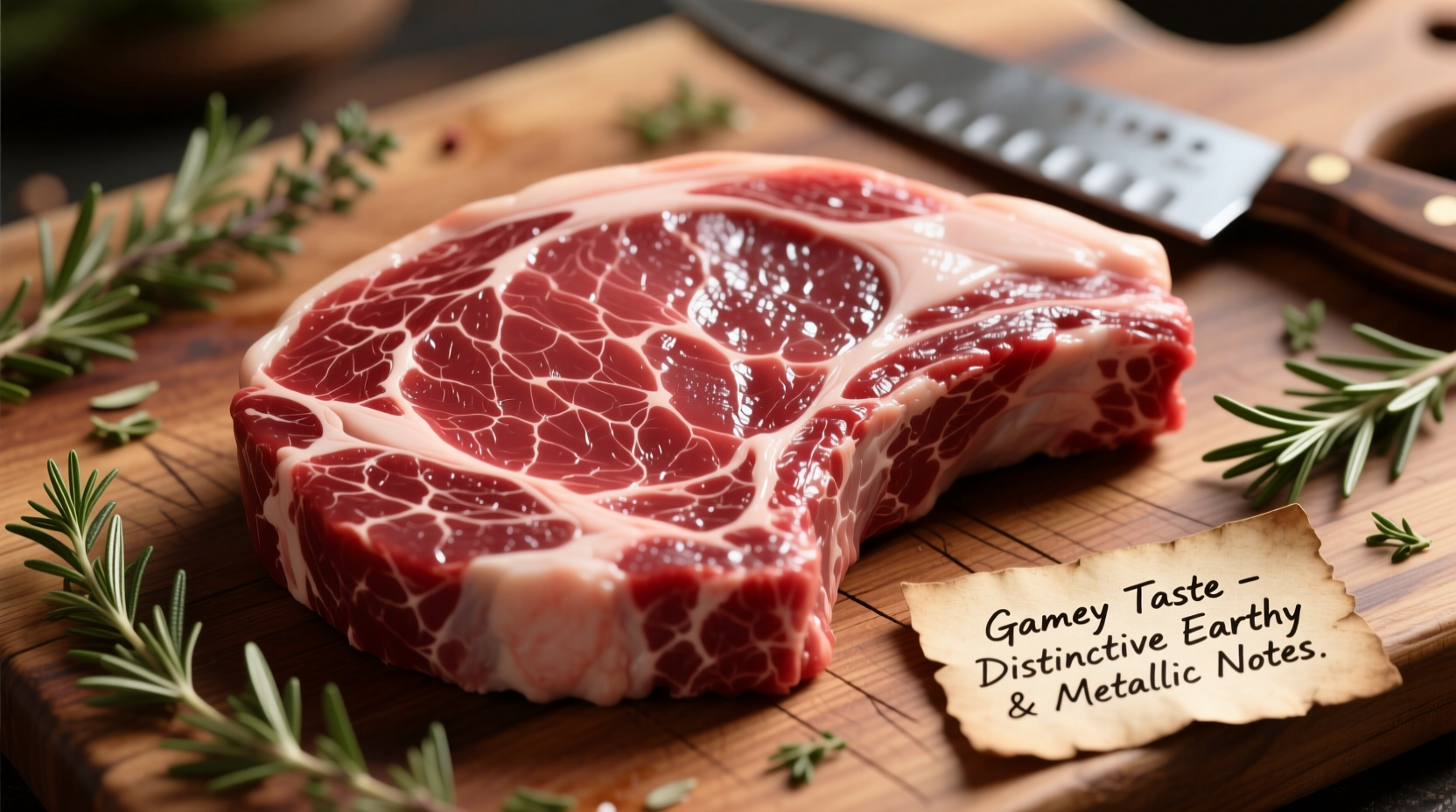If you've ever tasted venison, bison, or wild game and noticed a distinctive, robust flavor different from standard beef or chicken, you've experienced gamey taste. Gamey taste refers to a strong, earthy, sometimes metallic flavor profile commonly found in wild game meats and certain pasture-raised animals. This characteristic taste results from the animal's natural diet, active lifestyle, and biological factors like myoglobin content. Understanding gamey taste helps you distinguish desirable flavor complexity from actual spoilage, select appropriate cooking methods, and appreciate culinary traditions that celebrate these unique flavor profiles.
That distinctive earthy, robust flavor you notice in venison, elk, or even some grass-fed beef isn't a flaw—it's a characteristic known as gamey taste. This flavor profile stands apart from conventional meats with its complex earthiness, subtle metallic notes, and sometimes nutty undertones. Unlike spoiled meat (which has unpleasant sour or rotten characteristics), gamey taste represents a natural flavor variation that many cultures prize in specific culinary contexts. Recognizing and understanding this flavor difference prevents unnecessary food waste while helping you make informed choices about preparation and pairing.
Defining Gamey Taste: More Than Just 'Strong Flavor'
Gamey taste isn't simply "stronger" meat flavor—it's a specific sensory profile with distinct characteristics. This flavor emerges from several biological and environmental factors that differentiate wild game and certain pasture-raised animals from conventional livestock.
When food scientists analyze gamey flavors, they identify three primary components:
- Earthy/Grassy Notes: Resulting from natural forage like herbs, acorns, and wild vegetation in the animal's diet
- Metallic Undertones: Higher concentrations of myoglobin (the oxygen-storing protein in muscle tissue)
- Robust Umami: Concentrated amino acids from active muscle development in free-roaming animals
Unlike the consistent flavor of grain-fed supermarket meats, gamey taste varies seasonally based on what animals consume in their natural habitats. A deer hunted in autumn after feeding on acorns develops different flavor compounds than one harvested in spring after browsing on new growth.
Gamey vs. Spoiled: Critical Distinction Every Cook Must Know
Mistaking naturally gamey meat for spoiled product leads to unnecessary waste, while failing to recognize actual spoilage creates food safety risks. This comparison table helps you differentiate between acceptable gamey characteristics and dangerous spoilage:
| Characteristic | Naturally Gamey Meat | Actually Spoiled Meat |
|---|---|---|
| Smell | Earthy, iron-like, reminiscent of mushrooms or wet soil | Sour, ammonia-like, rotten eggs, or putrid odor |
| Color | Bright red to deep burgundy (varies by species), consistent throughout | Grayish-green, slimy surface, inconsistent discoloration |
| Texture | Firm, slightly moist surface | Slippery, sticky, or tacky surface |
| Taste | Robust but pleasant earthiness, complex umami | Sour, bitter, or unpleasantly sharp flavors |
| Storage Timeline | Fresh game maintains quality 3-5 days refrigerated | Exceeds recommended storage times for any meat type |
When in doubt, remember this rule: gamey meat smells like the forest floor after rain—earthy but clean—while spoiled meat emits distinctly unpleasant odors that make you want to move away from the source.
Why Meat Develops Gamey Flavor: The Science Behind the Taste
Three primary biological factors create gamey flavor profiles in meat:
- Natural Diet Composition: Wild animals consume diverse forage including tannin-rich plants, herbs, and browse that introduce complex flavor compounds. Research from the USDA Agricultural Research Service shows that deer feeding on acorns develop higher concentrations of certain phenolic compounds that contribute to distinctive flavor profiles compared to grain-fed livestock.
- Myoglobin Levels: Active, free-roaming animals develop higher myoglobin content in their muscles—sometimes 2-3 times more than conventional meats. This oxygen-storing protein contains iron that contributes metallic notes to the flavor profile. According to meat science studies published by the American Meat Science Association, myoglobin concentration directly correlates with both meat color intensity and characteristic gamey notes.
- Fat Composition: Game animals store different fat types than domesticated livestock. Wild game fat contains higher proportions of polyunsaturated fatty acids that oxidize more readily, creating complex flavor compounds during cooking. These fats also carry flavor compounds from the animal's natural diet directly into the meat.
Meats Most Likely to Exhibit Gamey Flavor Profiles
Not all meats develop gamey characteristics equally. This spectrum shows which proteins commonly display gamey flavors and why:
- Wild Game (Most Gamey): Venison, elk, moose, wild boar, rabbit—these animals live active lives on natural diets with no artificial feed
- Pasture-Raised Domesticated Animals (Moderately Gamey): Grass-fed beef, heritage breed pork, free-range lamb—these may show subtle gamey notes depending on forage diversity
- Conventionally Raised Meats (Least Gamey): Grain-fed beef, factory-farmed chicken, pork from confined operations—consistent diets minimize flavor variation
Interestingly, the same cut from different animals shows dramatic flavor variation. A study from Oregon State University Extension Service demonstrated that venison loin typically registers 3-5 times higher in flavor compound diversity than comparable beef loin, explaining why even mild preparation methods can't completely eliminate gamey characteristics in wild game.
Cultural Perspectives on Gamey Flavors: From Undesirable to Celebrated
Attitudes toward gamey flavors vary dramatically across culinary traditions. What some cultures consider undesirable, others prize as a mark of quality:
| Culinary Tradition | Attitude Toward Gamey Flavors | Traditional Preparation Methods |
|---|---|---|
| North American (Mainstream) | Often viewed negatively, associated with "wild" or "unrefined" | Masking with strong seasonings, bacon wrapping, thorough cooking |
| European (Traditional) | Valued characteristic in game season, indicates freshness and wild origin | Aging (hanging), red wine reductions, juniper berries, careful roasting |
| African (Bushmeat Traditions) | Essential flavor marker indicating proper preparation and species | Slow cooking with aromatic barks, specific leafy greens, fermentation |
| Asian (Certain Regions) | Mixed—valued in some contexts (e.g., certain Chinese medicinal dishes), avoided in others | Strong aromatic spices, vinegar-based marinades, quick high-heat cooking |
In France, game season (la saison de la chasse) celebrates wild game flavors through traditional preparations like civet de lièvre (hare stew) where the gamey characteristics are enhanced rather than masked. Meanwhile, in mainstream American supermarkets, meat processors actively work to minimize any gamey notes through controlled feeding and processing.
Managing Gamey Flavors: Practical Kitchen Strategies
Whether you want to reduce or enhance gamey flavors, these evidence-based techniques deliver consistent results:
Reducing Gamey Intensity
When working with strongly flavored game meats for audiences unfamiliar with these profiles:
- Acidic Marinades: Soak meat in buttermilk, vinegar-based solutions, or citrus marinades for 12-24 hours. The acids help break down some flavor compounds while tenderizing.
- Fat Integration: Wrap lean game meats in fattier cuts (like bacon) or mix ground game with pork fat (20-30%) to mellow intensity.
- Dry Aging: Controlled aging (5-10 days) allows natural enzymes to break down some gamey compounds while concentrating desirable flavors.
- Aromatic Pairings: Cook with juniper berries, rosemary, red wine, mushrooms, or smoked elements that complement rather than fight gamey notes.
Enhancing Desirable Gamey Characteristics
When preparing game for those who appreciate these complex flavors:
- Minimal Processing: Avoid strong marinades that mask natural flavors; use simple salt rubs 24 hours before cooking.
- Proper Aging: Hang wild game in controlled conditions (34-38°F, 85% humidity) for 7-14 days depending on size.
- Wood-Fired Cooking: Complement natural earthiness with subtle smoke from fruitwoods like apple or cherry.
- Wine Reductions: Create pan sauces with full-bodied red wines that enhance rather than cover gamey notes.
Professional chefs like those at the Culinary Institute of America recommend tasting small samples before cooking to assess the intensity level, then adjusting preparation methods accordingly. This approach respects the meat's natural characteristics while ensuring the final dish meets your culinary goals.

When Gamey Taste Becomes a Problem: Context Boundaries
Understanding when gamey flavors enhance a dish versus when they become problematic requires recognizing specific context boundaries:
- Consumer Expectations: In mainstream American restaurants, even mild gamey notes may disappoint customers expecting conventional meat flavors. Heritage breed pork might show subtle gamey characteristics that delight food enthusiasts but confuse standard diners.
- Culinary Application: Gamey flavors work beautifully in stews, pâtés, and hearty dishes where complexity is welcome, but may overwhelm delicate preparations like carpaccio or mild curries.
- Preparation Skill Level: Novice cooks often struggle to balance gamey flavors appropriately. Experienced chefs understand how to use gamey notes as just one element in a complex flavor profile.
- Meat Freshness Timeline: Game meats have a narrower freshness window. What starts as desirable gamey complexity can quickly cross into off-flavors if not properly handled—typically within 3-5 days refrigerated compared to 5-7 days for conventional meats.
These boundaries explain why the same venison chop might receive rave reviews at a wilderness lodge but complaints at a suburban steakhouse—the context determines whether gamey characteristics enhance or detract from the dining experience.
Embracing Gamey Flavors: Culinary Opportunity, Not Flaw
Gamey taste represents nature's flavor diversity rather than a defect. By understanding its origins, distinguishing it from spoilage, and applying appropriate preparation techniques, you transform what some consider a challenge into a culinary advantage. Whether you're processing your first deer harvest or selecting grass-fed beef at the farmers market, recognizing gamey characteristics helps you make informed decisions about preparation and pairing.
The next time you encounter that distinctive earthy flavor, consider it an invitation to explore culinary traditions that have celebrated these complex profiles for centuries. With the right approach, gamey meats offer flavor dimensions that conventional supermarket options simply cannot replicate.











 浙公网安备
33010002000092号
浙公网安备
33010002000092号 浙B2-20120091-4
浙B2-20120091-4